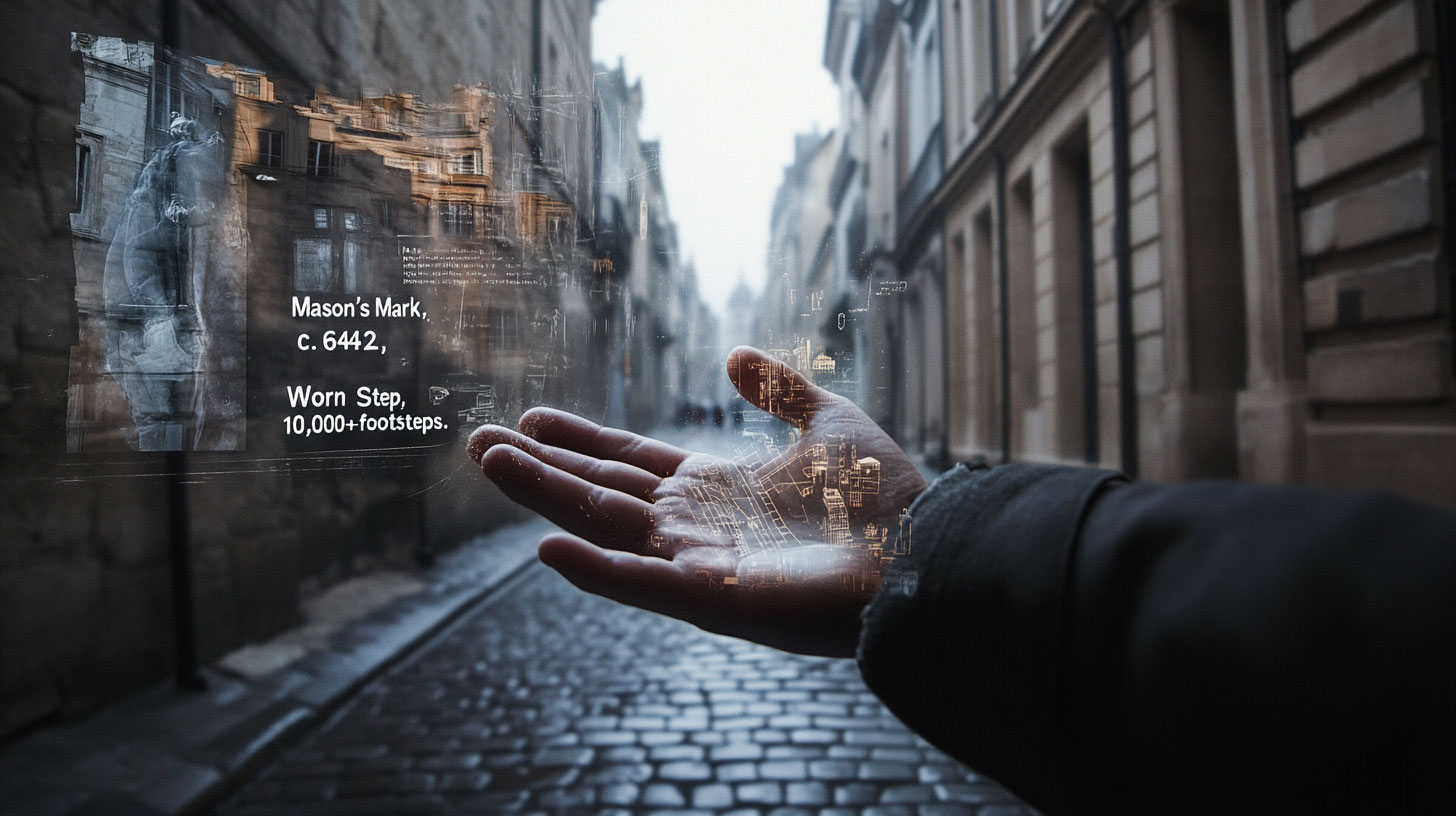
Finding Stories in the Stone
You’ve walked down this street a hundred times. The cobblestones are a path to work, the pub on the corner a place for a quick pint, the old building next to it just a facade of brick and mortar. But what if you stopped? What if you really looked? You might notice the ghost of a painted advertisement fading on the side of that building, the date ‘1723’ carved above a doorway worn smooth by time, or a strange, bestial face carved into the keystone of an arch, grinning down at a world that has forgotten its meaning.
This city—any city—is not a passive backdrop to our lives. It is a living archive, a palimpsest where centuries of stories, tragedies, triumphs, and secrets are etched into the very fabric of its streets. To find these stories, you don’t need a time machine. You don’t need a degree in history. All you need is a shift in perception—to learn how to listen to what the stones are whispering.
This is the art of finding stories in the stone. And it is the most thrilling treasure hunt there is.
The City as a Text: Learning to Read the Language of Architecture
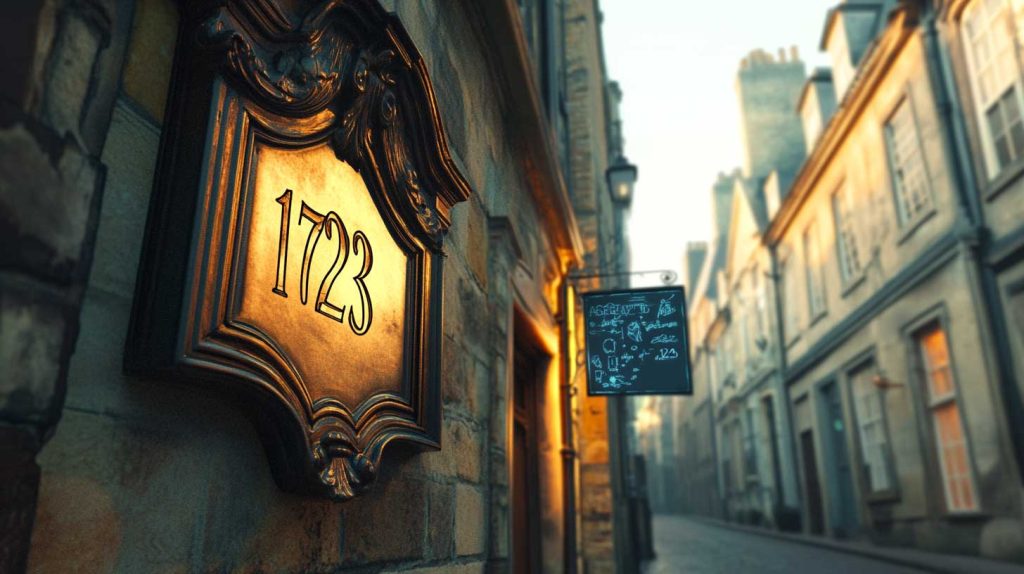
Every city has a language. Its vocabulary is made of building materials, architectural styles, and street patterns. Its grammar is found in the wear and tear of centuries, the additions and subtractions of successive generations.
Start with the obvious: the dates. A year carved above a door isn’t just a fact; it’s an opening chapter. *1723*. What happened in your city in 1723? Was it a year of prosperity or plague? That building might have been one of the first to be rebuilt after a great fire, a testament to a city’s resilience.
Now, look up. Rooflines tell a story of ambition and economy. The grandiose, ornate cornices of a Victorian bank scream of wealth and confidence. The simpler, purely functional lines of a postwar building speak of practicality and the need to rebuild. A series of buildings with mismatched rooflines might hint at a street that was widened, its buildings lopped in half to make way for progress.
Look for the ghost signs. Faded painted advertisements on brickwork are some of the most poignant urban ghosts. They tell us what people valued: “Bean’s Superior Boot Polish,” “Coal Delivered Daily,” “Icelandic Cod Liver Oil.” They hint at forgotten industries and daily rituals. A ghost sign for a long-gone brewery on the side of a modern bank is a perfect little joke from the past.
The Devil (stories in the stone) is in the Details
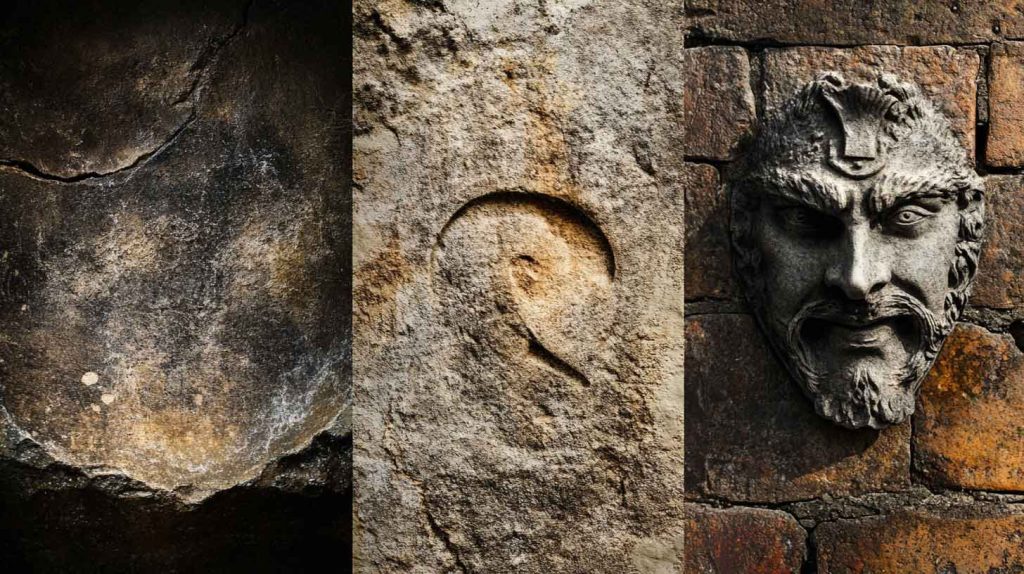
The grand narrative of a city is written in its monuments and major squares. But the best stories—the intimate, human-sized ones—are hidden in the details.
Mason’s Marks. On the stones of cathedrals, castles, and old walls, you might find faint, carved symbols: a loop, a triangle, a unique sigil. These are the signatures of the stonemasons who did the work. Each mark was unique, so the foreman could track how much work each man had done and pay him accordingly. That small, geometric shape is the autograph of a craftsman who lived and died centuries ago, a permanent reminder of the individual hands that built the world we walk through.
Worn Steps. Run your hand along a stone step worn into a deep, smooth dip. This is not erosion from rain; this is the result of thousands of footsteps, thousands of lives, wearing away solid stone over hundreds of years. You are touching the literal impression of history. Who walked here? A medieval merchant? A plague doctor? A suffragette on her way to a rally? The stone holds the memory of them all.
The Misplaced Keystone. Why is there a clearly medieval grotesque or a symbol on a building from the 1800s? Often, when older buildings were demolished, their materials were reused. A stonemason, perhaps feeling a kinship with his predecessor or simply being practical, would incorporate a carved stone from the old building into the new one. That grinning gargoyle on a Victorian warehouse might be the last surviving piece of a monastery that was dissolved 300 years prior. It’s a fossil, preserved in a new rock.
Finding Stories in The Stone – The Tools of the Modern Story-Seeker
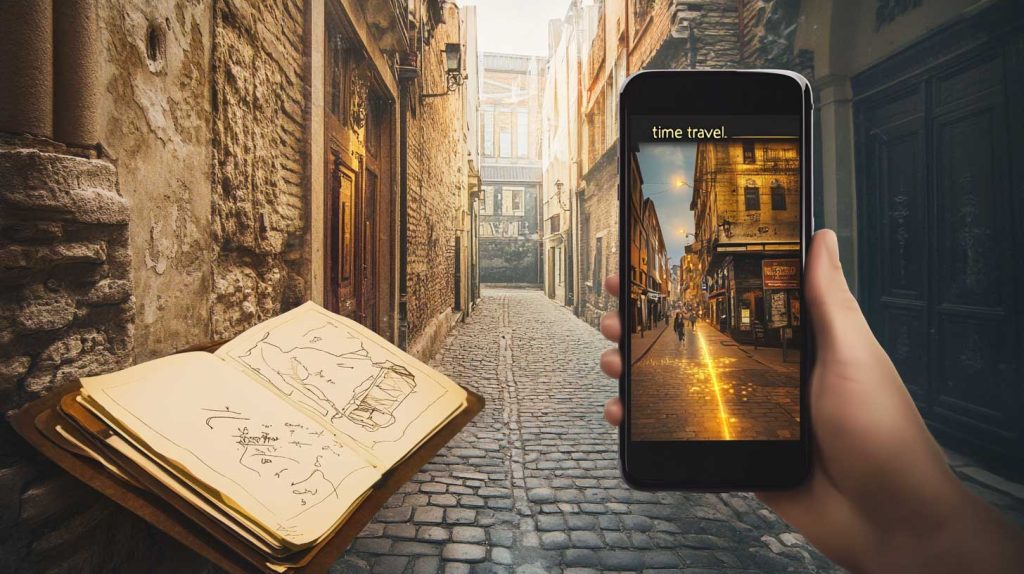
You are the protagonist of this adventure, and your toolkit is digital and analog.
The Analog Toolkit:
- The Humble Pause. The single most powerful tool you have is the willingness to stop. Slow down. Look up from your phone.
- Your Feet. The best way to find stories is to get lost on purpose. Turn down the alley you’ve always ignored. Walk a different way home.
- A Notebook. Jot down what you see. A date, a symbol, a strange architectural feature. The act of writing it down cements it in your memory and invites further research.
The Digital Toolkit:
- The Camera Phone. Your number one asset. Document everything. A photo allows you to examine details later, zoom in, and research.
- Geotagged History. Apps like HistoryPin or local digital archives allow you to see historical photographs overlaid on your current location. Suddenly, the modern parking lot transforms into a black-and-white image of a bustling 19th-century market square. It’s the closest thing to time travel we have.
- The Power of Search. See a strange symbol? Google Lens it. Find a name on a plaque? Fall down a Wikipedia rabbit hole. The collective knowledge of humanity is in your pocket, waiting to be consulted.
The Deeper Magic: From Observation to Empathy
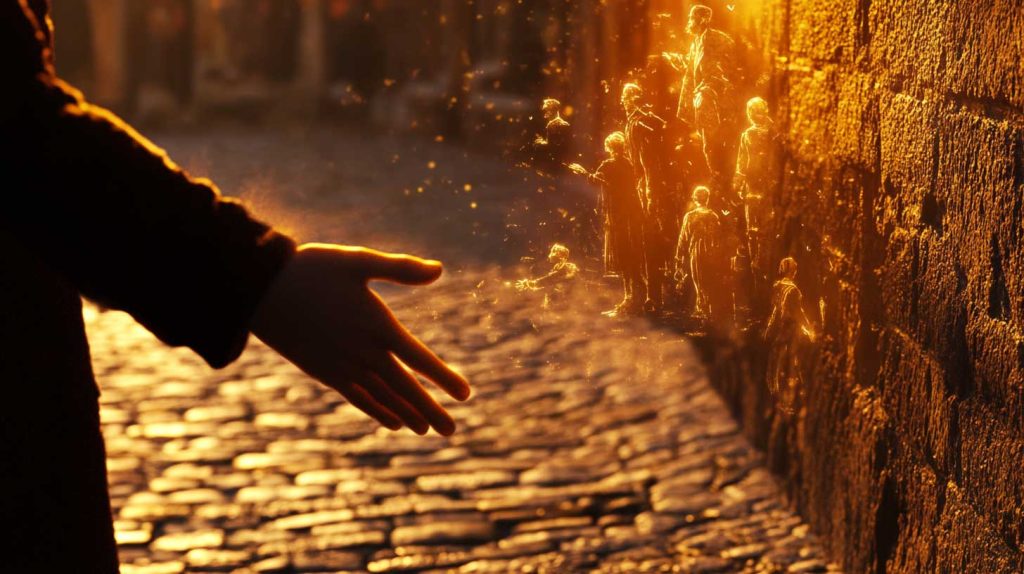
Finding stories in the stone is more than an intellectual exercise; it’s an act of connection. It’s a way to battle the chronic loneliness of the modern world by realizing you are never truly alone. You are walking in the footsteps of everyone who came before you.
That patch of uneven cobblestones? It marks where a bomb fell during the Blitz, repaired with whatever was on hand.
That now-busy intersection that feels oddly wide? It was once the site of a popular church, demolished during the Reformation, its footprint never quite filled.
The pub with the low ceilings and the flagstone floor? It’s been a place of refuge, conversation, and conspiracy for three hundred years. The air itself feels thick with old arguments and laughter.
When you start to see these layers, the city transforms from a mere location into a living, breathing entity with a memory. You develop a form of temporal empathy—the ability to feel a connection to the past and the people who shaped your world. You realize that history isn’t a dry subject in a textbook; it’s the very ground beneath your feet. The past isn’t dead; it’s not even past. It’s just waiting for a curious eye to notice it.
Your Quest Awaits
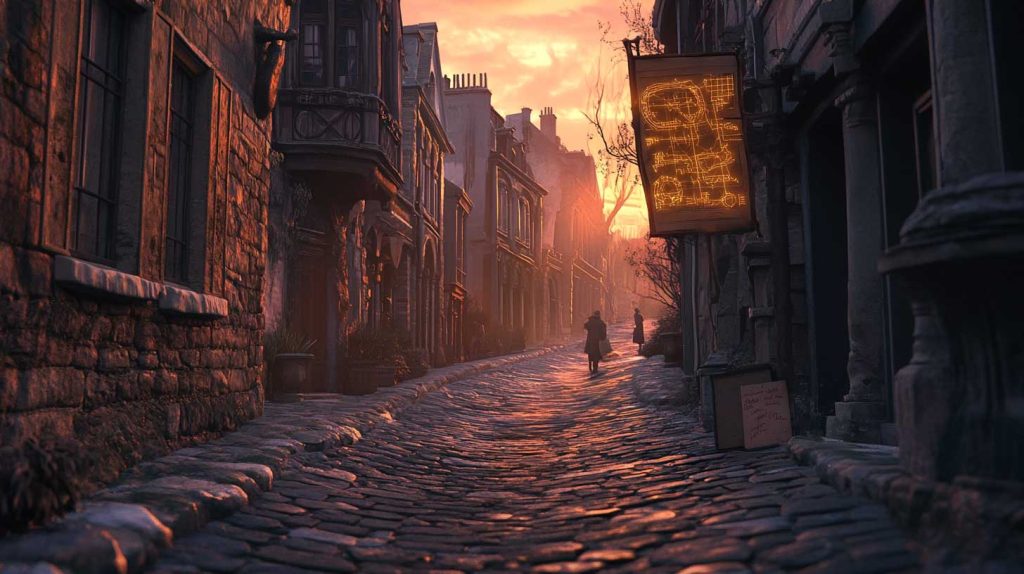
So, the next time you walk through your city, don’t just see the stone. Read it. Ask it questions.
Who carved that face and why is it smiling?
Why does this alley have such a ominous name?
What was here before this shopping centre?
The answers are there, hidden in plain sight. The city is the greatest book ever written, a mystery novel with an infinite number of chapters. It doesn’t require a guidebook. It only requires a guide—and that guide is your own insatiable curiosity. Pick a street, any street, and start reading. The story begins the moment you decide to look.









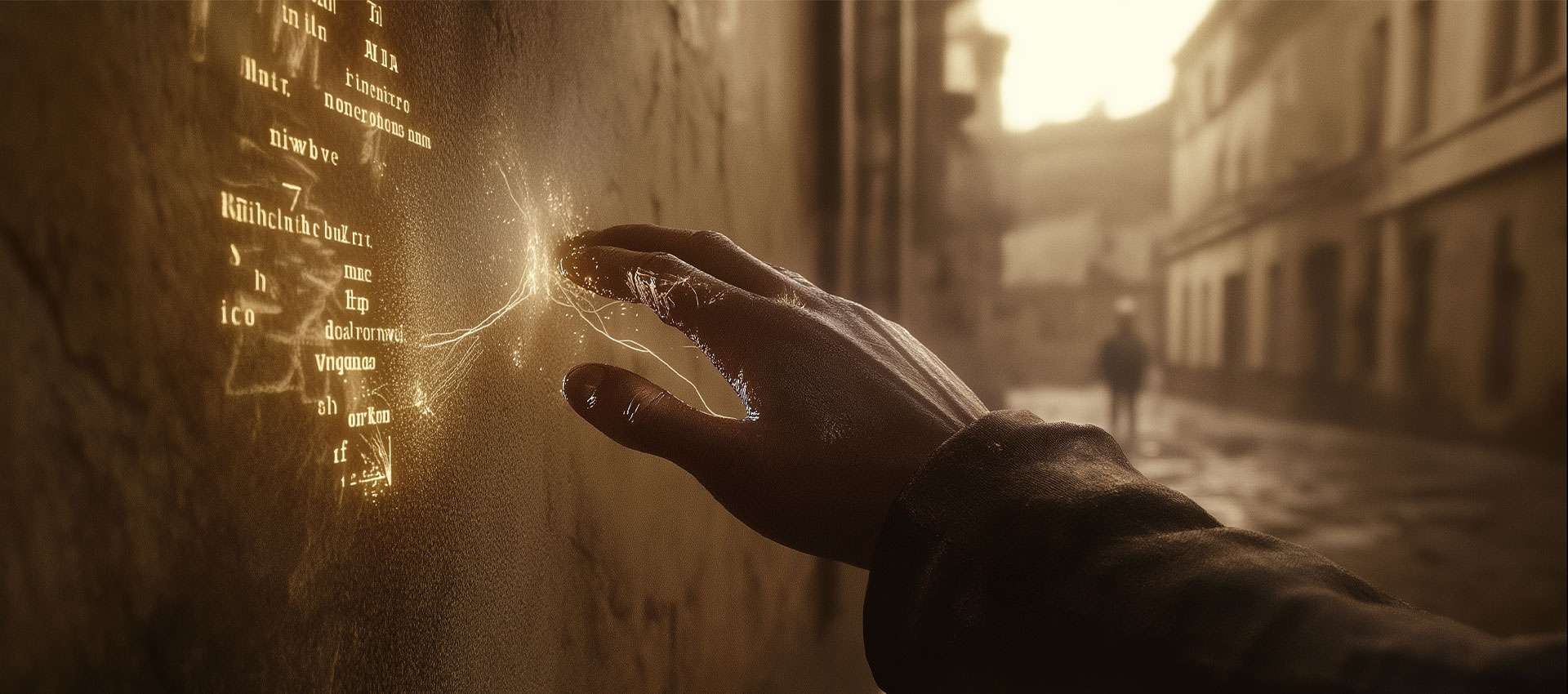

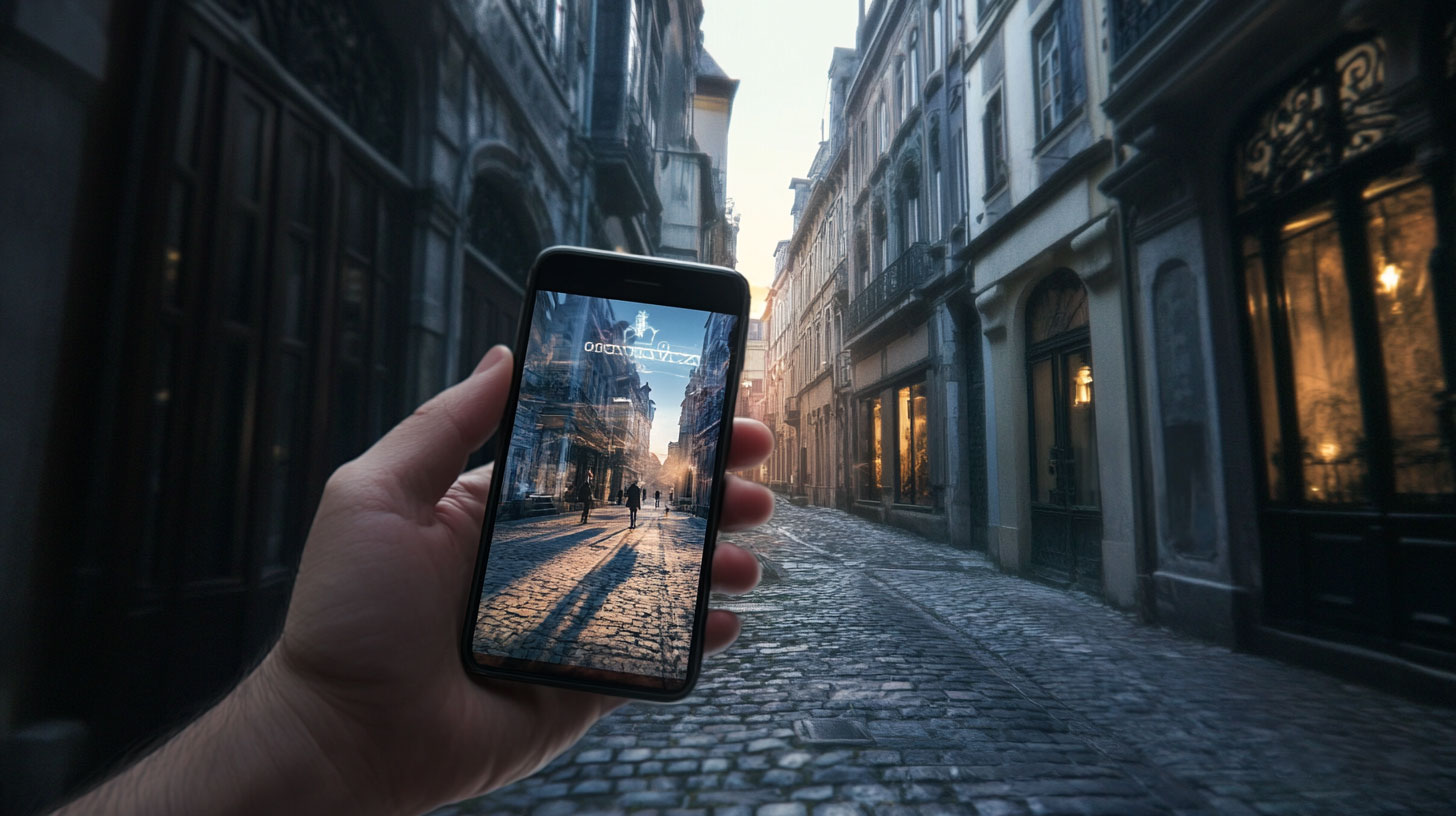

No Comments